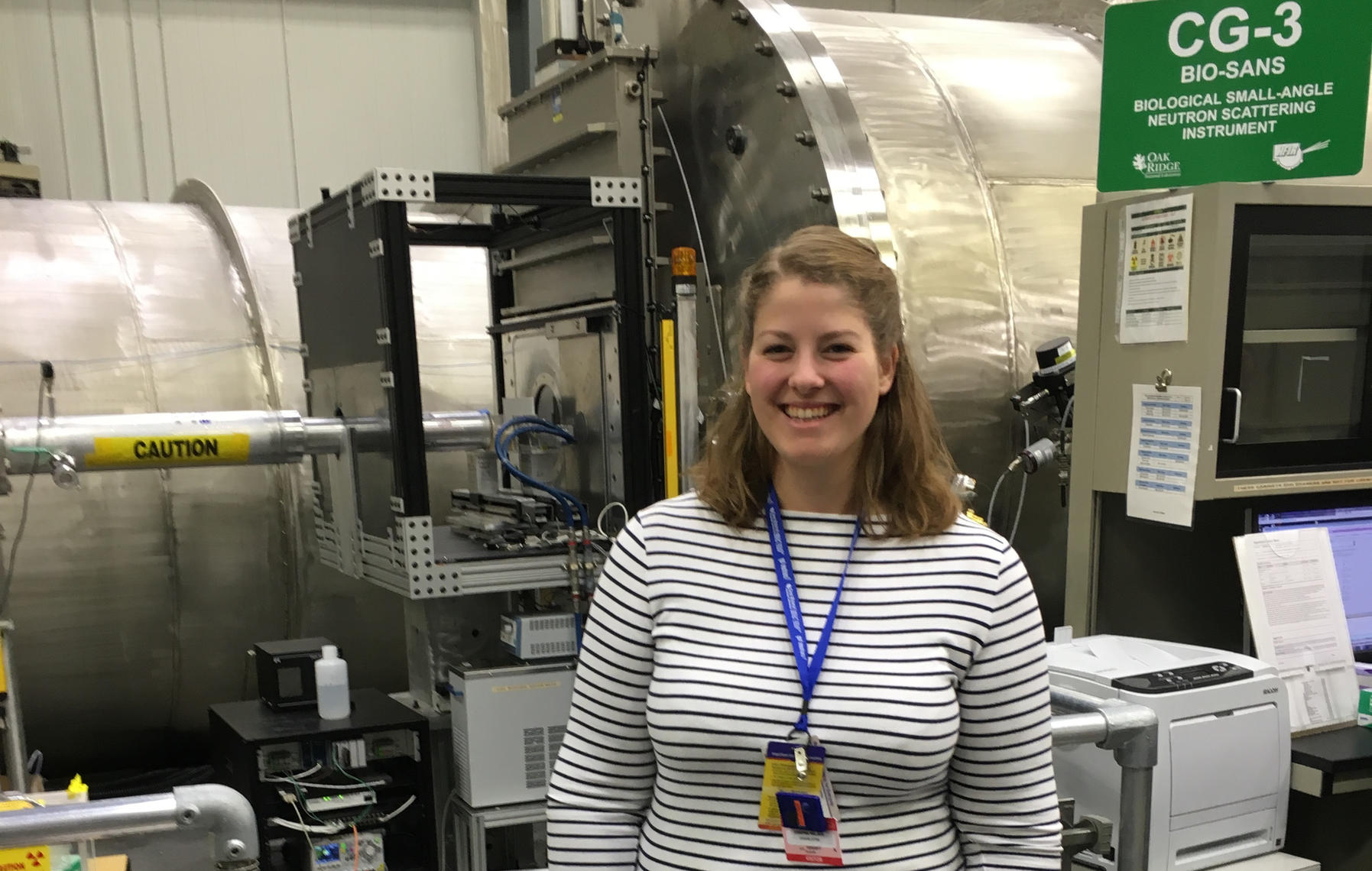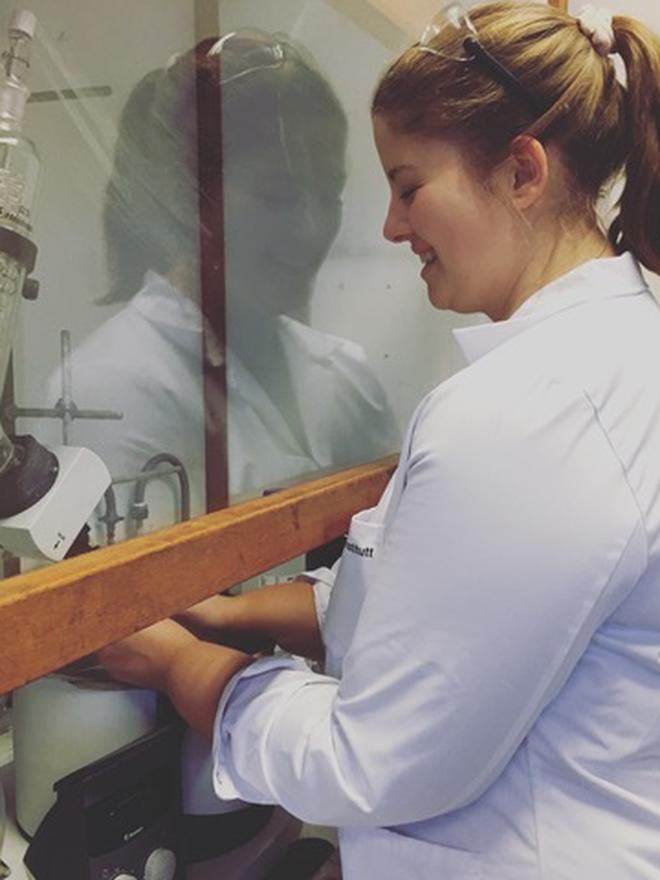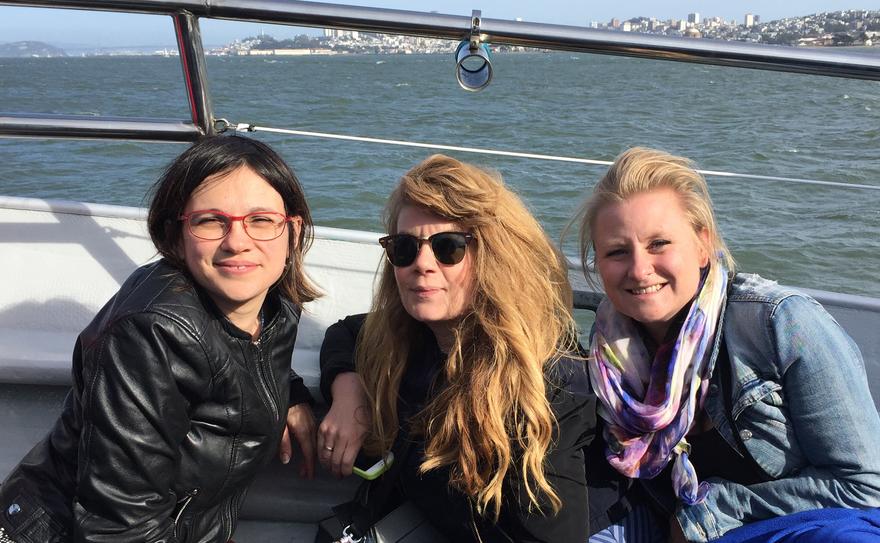
Through the MAX4ESSFUN Interreg program, a University of Oslo PhD student has teamed up with researchers at Malmö University to carry out studies on next-generation antibiotics using neutrons at France's ILL.
OSLO—The inauguration of the scientific user program at the European Spallation Source (ESS) is less than six years away. Together with the European Union and a number of regional actors, ESS is helping to prepare the next generation of neutron researchers to maximise the impact of the facility’s unique capabilities, unprecedented power and world-leading scientific instruments. This is happening locally in Sweden, Denmark and Norway through engagement with the many research universities clustered in Scandinavia.
The European Union programme Interreg Öresund-Kattegat-Skagerrak (ÖKS) is providing 50 percent matching funds for the €19 million programme ESS & MAX IV: Cross Border Science and Society, begun in 2015. The three-year programme is led by Sweden’s Region Skåne and co-lead partner Region Hovedstaden, in Denmark. It includes 27 partner organisations in Sweden, Denmark and Norway, and will continue through August 2018.
The flagship Cross-Border program is the €13.6 million MAX4ESSFUN. In cooperation with ESS and the MAX IV synchrotron in Lund, MAX4ESSFUN aims to build user capacity for the two facilities by directly financing experiment projects, training, and supervision for PhD and postdoc researchers at eight universities in the ÖKS region.
The scope of the project is large, including 176 six-month-long experiment projects performed at operational neutron and light-source facilities and an educational component including courses, workshops and summer schools. Collectively, the project makes possible 1,000 months of training and 500 months of instructor time with senior researchers, including scientists at ESS.
Delivering on the Promise of Antimicrobial Peptides
Josefine Eilsø Nielsen is a doctoral research fellow in the Department of Chemistry at the University of Oslo, where she also received her MSc in Pharmacy. She has recently worked as a scientific officer for the Norwegian Medicines Agency.
One of the key benefits of the high neutron flux at ESS is that it will significantly expand opportunities for studies of soft matter and other biology and life sciences research key to fighting a wide range of diseases, including Alzheimer’s, cancer and the threat of humanity’s increasing resistance to existing antibiotics.
This interview was first published in the ESS & MAX IV: Cross Border Science and Society newsletter on November 30, 2017, and has been lightly edited.
Young Scientist: Interview with Josefine Eilsø Nielsen
November 30, 2017
ESS & MAX IV: Cross Border Science and Society
Young researcher: Josefine Eilsø Nielsen, University of Oslo
Experiment: Mapping out the interactions of antimicrobial peptides with model lipid membranes using neutron reflectometry
Experiment period: 2017-05-11 — 2017-11-11
Supervisor: Reidar Lund, University of Oslo
Co-supervisor: Marité Cárdenas, Malmö University
We are continuing our series of interviews with young scientists involved with 6-month experiments granted by MAX4ESSFUN. This time Josefine Eilsø Nielsen from the University of Oslo is asked to describe her research into antimicrobial peptides’ interaction with lipid model membranes.
Josefine is a first-year PhD student at the Department of Chemistry at the University of Oslo (UiO). She works in the group of Associate Professor Reidar Lund, focusing on research into antimicrobial peptides’ interaction with lipid model membranes (using lipid vesicles and supported bilayers).
“In my work, I use different scattering techniques including Small Angle Neutron and X-ray Scattering (SANS and SAXS) and Neutron Reflectometry (NR).”
Combining results from scattering methods gains understanding
Bacterial resistance to conventional antibiotics represents a major setback of modern medicine and desperately calls for innovation of new compounds and strategies. Antimicrobial peptides are a group of molecules that are a natural part of the human immune system shown to have effect against a broad spectrum of pathogens, including both gram-positive and gram-negative bacteria.
“When combining the results from scattering methods, together with other complimentary techniques, we gain biochemical and biophysical understanding of these systems,” Eilsø Nielsen says. “This knowledge can be used in the development of new antibiotics for the future based on antimicrobial peptides designed specifically for the task.”
Eilsø Nielsen did her masters’ project in pharmacy at UiO’s chemistry department focusing on temperature sensitive co-block polymers. During this period, she went to the Kjeller research reactor at Norway’s Institute for Energy (IFE) to make SANS measurements, and also took a neutron course at the same facility.
“I found the scattering method really interesting, and I therefore looked for a PhD position in the field. The most interesting part of my research is that the project I am working on combines knowledge about cell biology, biochemistry, physical chemistry and pharmacology, which I have from my Pharmacy background, with state of the art scattering techniques.”
Collaboration with Malmö University
Eilsø Nielsen felt that the collaboration with Marité Cárdenas group at Malmö university was extremely valuable for the project [ed.: Dr. Cárdenas is a member of the ESS Science Focus Team for Life Science & Soft Condensed Matter as well as a co-proposer of the instrument ESTIA, currently under construction for ESS].
“They are really experts in lipids and neutron reflectometry, while our group in Oslo mainly have specialized in small-angle scattering techniques. When combining these two methods we can hopefully both get an understanding of how the peptides interact with the surface on the membrane and the cell (lipid vesicle) in bulk.”
She travelled to Malmö for two weeks in August 2017 to learn the QCM-D method from Cárdenas and her post-doc Tania Lind. During this stay they produced results demonstrating clear interaction between the peptide under investigation and a supported lipid bilayer dependent on temperature, concentration of peptide, and salt concentration.
“To fully understand the interaction, we are going to a beamline at ILL [Institut Laue-Langevin] in France to do Neutron Reflectomery together with Marité Cárdenas group. We have also had visits from Cárdenas group here in Oslo, where we discuss the results and the progress of the project.
“I hope to get some really nice results from Neutron Reflectometry and SANS showing the interaction between antimicrobial peptides and lipid bilayers, and that we are able from these results to clarify the mechanism of action for the peptides. Further, we would like to try out new engineered peptides and peptoids that can be promising candidates for future antibiotics.”
Josefine Eilsø Nielsen is a doctoral research fellow in the Department of Chemistry at the University of Oslo, where she also received her MSc in Pharmacy. She has recently worked as a scientific officer for the Norwegian Medicines Agency.
Text and interview: Axelina Kull, Region Skåne



























